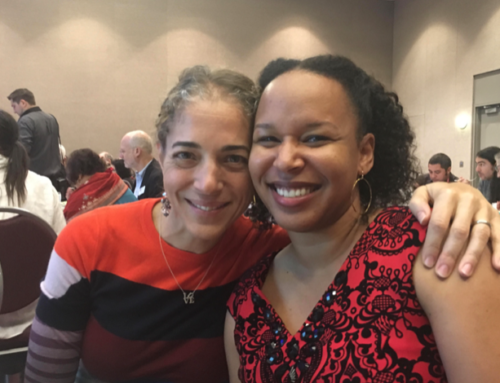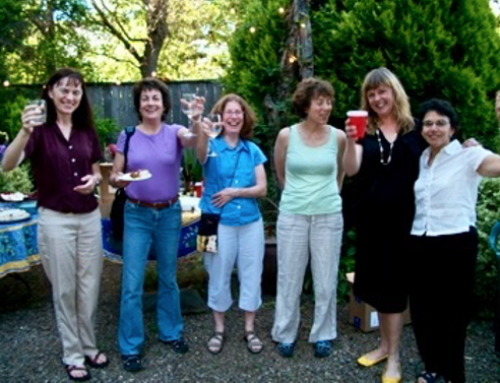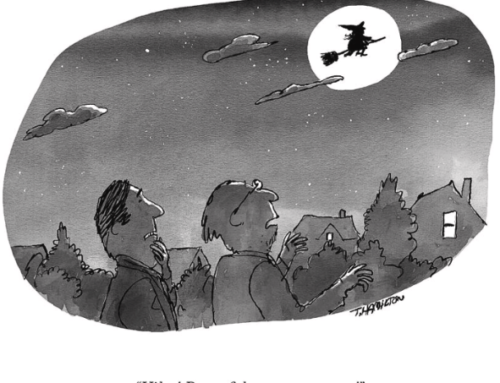A few years ago Carole McGranahan, a former student, spoke by Skype to my Social Theory class at Colgate University. In response to a question from a student about feminist perspectives, Carole laughed and said, “When I think about this, I hear Mary’s voice inside my head.” It occurred to me then that the voice Carole hears might be mine, but the words she hears come from other voices; those of the women who mentored me and introduced me to both anthropology and feminist scholarship. For those of us who teach, this is a potent reminder of those enduring “voices in our head” and of the ways they are transmitted across generations. Thirty-five years into my career at a liberal arts college, I now have a deeper understanding of how my research and teaching carries the traces of those who taught me, and of the impact I have had on others.
The first anthropologist I ever met was Kay Warren. It was 1975 at Mount Holyoke College, and I had the vague idea that I wanted to be an anthropologist, but I had never actually seen one in person. Kay, who was in her first academic appointment out of graduate school, was dynamic, charismatic, intellectually challenging, and a brilliant teacher. I was enthralled and immediately declared an anthropology major. A compelling aspect of Kay’s pedagogy was her use of slides from her fieldwork in highland Guatemala and Peru; images documenting agricultural practices, religious and community rituals, and ethnic identities expressed in dress and bodily comportment filled our class periods. Her work focused on the meanings of class and status categories as they were enacted in religious and ethnic identities (Bourque and Warren 1981; Warren 1978). In my dissertation research in Liberia, West Africa, I also focused on status categories and how they intersected with gender in various ways (1990). This work came out of the period when “the anthropology of women” became less an additive project addressing the relative absence of women in ethnographic accounts and began transforming the basic concepts of the discipline. Kay taught me to look at gender through an intersectional lens, in terms of how specific local conditions shaped the consequences of beliefs about the ‘nature’ of men and women. I have used examples from her ethnography for years in teaching theory, and Kay’s voice is in my head every time.

Kay Warren
It was in one of Kay’s courses that I first encountered Louise Lamphere’s name and her work. I still have my college copy of Woman, Culture and Society (1974) and I remember that my friends and classmates were excited by this new world of explicitly feminist anthropology. We rejected the idea that there was anything “natural” about gender hierarchy, but needed some way of explaining the very real inequalities we saw around us. Lamphere’s chapter in the book responded to the then-popular notion that it was men who had effectively “invented culture” through cooperative hunting while women were trapped in eternal competition with each other for access to the best male providers. In a brilliant three-way comparison, Louise demonstrated that household composition could explain why women might be viewed as inherently cooperative or competitive with each other, depending on where their interests lay. Her work laid out not just a theory but a methodology for gathering evidence, carefully tracing mutual obligation, reciprocal exchanges of resources, and the nearly invisible strategies employed by structurally subordinate people that allowed them to achieve their desires.
I applied to Brown University for graduate school because Louise was there, although I had heard disquieting rumors that there had been some “trouble,” not knowing that she had just settled a ground-breaking sexual discrimination suit with Brown after being denied tenure. Her case led to a consent decree, monitored by a judge over the next fifteen years, requiring Brown to set goals for the hiring, tenure, and promotion of women faculty that fundamentally changed the face of the institution. The biggest disappointment of my first year was that Louise was on maternity leave and not teaching. I met her that fall and realized that it was the first time I had actually seen a pregnant professor. I was of the generation who were told we could “have it all,” but with no clear instructions for how to accomplish this. My cohort was awash in ambivalence, struggling with contradictory messages about professionalism, femininity, and the costs that might come with the choices we made.
Over the next few years, I watched as Louise both lived the life of a working mother and turned the contradictions into a series of major research projects (1986, 1993, 2007). As her research assistant, I spent time with her driving around Rhode Island visiting the sites of old textile mills and photographing them, searching for historic images of factory women in small museums and historical societies, then preparing slides for use in her course, “Women, Work, and Family.” I served as the TA for that course, and taught my own version of it for many years at Colgate. The first time I offered it myself was just after learning that I was pregnant with my first child, and the readings on the syllabus suddenly took on new urgency as I searched for answers to my own questions. My daughter’s middle name is Louise.
I learned an enormous amount from Louise about the hard work of gathering empirical data. Her letters to me when I was in the field in Liberia were constant reminders to get my census done, catch up with typing my field notes, was I talking to enough people? Louise taught me how to be an effective scholarly writer. In her small, precise handwriting, the most frequent comment she left in the margins of my pages was, “How does this advance the argument?” forcing me to write clearly, precisely, and concisely. I have written this same phrase endlessly in the margins of my own students’ papers over the years, her voice echoing in my head as I expect mine does in the students I have taught. In the early stages of my career, she pushed me to attend as many conferences as possible and often let me stay for free in her hotel room; to this day, we are annual roommates at the AAA, although now I can pay my share. From introductions to editors at university presses to letters of support for tenure and promotion, Louise has shaped and guided my career like no one else. I am eternally grateful.

There is another voice, and another woman who greatly impacted my initial understanding of anthropology, but who holds a less prominent place in the academic feminist world. Among my undergraduate professors was Patricia Guthrie. In the mid-nineteen seventies, she was an anomaly on the Mount Holyoke faculty not as a woman but as an African American. Pat received her Ph.D. from the University of Rochester where she studied under Alfred and Grace Harris, who had built a program modeled on the British social anthropology of Meyer Fortes. In her courses, I read all the classics: Radcliffe-Brown, Evans-Pritchard, and Fortes himself dominated the syllabi, as did ethnographies of Africa. Pat’s own research was with Gullah-speaking African Americans in South Carolina, and she applied these theories to the formation and developmental cycles of matricentric households undergoing rapid change as the political economy of the region shifted from small scale farming to tourism (1996). Her voice is in my head every time I exhort my students to pay attention to the “rights, duties, privileges, and obligations” attached to any status position. Pat took me to my first academic conference to deliver my first paper and gave me valuable contacts in South Carolina when I decided to do MA research there. The direct linguistic connection between Gullah and the Guinea Coast of West Africa is what led me to Liberia, the site of my scholarly work for the rest of my career. When she left Mount Holyoke, she left behind several large boxes of books addressed to me; every time I pull a “classic” mid-twentieth century ethnography off the shelf, I look for her name written inside. Perhaps she thought she was leaving anthropology behind in the early 1980s, although she later returned to academia and retired as a full professor.
Kay and Louise have a continuing presence in my life, and friends have often commented on my good fortune in having such an impeccable lineage of well-known feminist mentors. Why did I allow Pat to fall out of my feminist anthropology family? Living on opposite sides of the country clearly had some impact, and over the years I only ran into her a few times at national meetings. While Mount Holyoke was a hotbed of feminism in the seventies, how inhospitable was it and indeed the larger field of academia for a young Black anthropologist? I recently learned that Pat played a central role in the founding of the Association of Black Anthropologists (Harrison 1987) during the same years she was weighing whether or not to stay at a small women’s college in rural Massachusetts. She likely decided that her energy, efforts, and talents would be put to better use in other settings, but I am fortunate to have learned from her, and to have her voice in my head. That voice reminds me that the feminist networks we construct across our lives can exclude as well as embrace, and the narratives we tell about them need constant, reflexive revision.
References
Bourque, Susan C. and Kay B. Warren. 1981. Women of the Andes: Patriarchy and Social Change in Two Peruvian Towns. Ann Arbor, MI: University of Michigan Press.
Guthrie, Patricia. 1996. Catching Sense: African American Communities on a South Carolina Sea Island. Westport CT: Bergen & Garvey.
Harrison, Ira E. 1987. The Association of Black Anthropologists: A Brief History.” Anthropology Today 3(1): 17-21.
Lamphere, Louise. 1987. From Working Daughters to Working Mothers: Immigrant Women in a New England Industrial Community. Ithaca NY: Cornell University Press.
Lamphere, Louise, Patricia Zavella, Felipe Geonzales, and Peter B. Evans. 1993. Sunbelt Working Mothers: Reconciling Family and Factory. Ithaca NY: Cornell University Press.
Lamphere, Louise, with Eva Price, Carole Cadman, and Valerie Darwin. 2007. Weaving Women’s Lives: Three Generations in a Navajo Family. Albuquerque NM: University of New Mexico Press.
Moran, Mary H. 1990. Civilized Women: Gender and Prestige in Southeastern Liberia. Ithaca NY: Cornell University Press.
Rosaldo, Michelle Zimbalist and Louise Lamphere, eds. 1974. Woman, Culture, and Society. Stanford CA: Stanford University Press.
Warren, Kay B. 1978. The Symbolism of Subordination: Indian Identity in a Guatemalan Town. Austin TX: University of Texas Press.
Cite as: Moran, Mary H. 2021. “Coming of Age in the Second Wave: Kay Warren, Louise Lamphere, Patricia Guthrie and the Voices in Our Heads.” In “Genealogies of the Feminist Present: Lineages and Connections in Feminist Anthropology,” edited by Lynn Bolles and Mary H. Moran, American Ethnologist website, 24 May 2021, https://americanethnologist.org/features/collections/legacies-and-genealogies-in-feminist-anthropology/coming-of-age-in-the-second-wave-kay-warren-louise-lamphere-patricia-guthrie-and-the-voices-in-our-heads
Mary H. Moran is Professor of Anthropology and Africana and Latin American Studies at Colgate University, where she has been on the faculty since 1985. Her work focuses on gender and politics in Liberia, West Africa.



